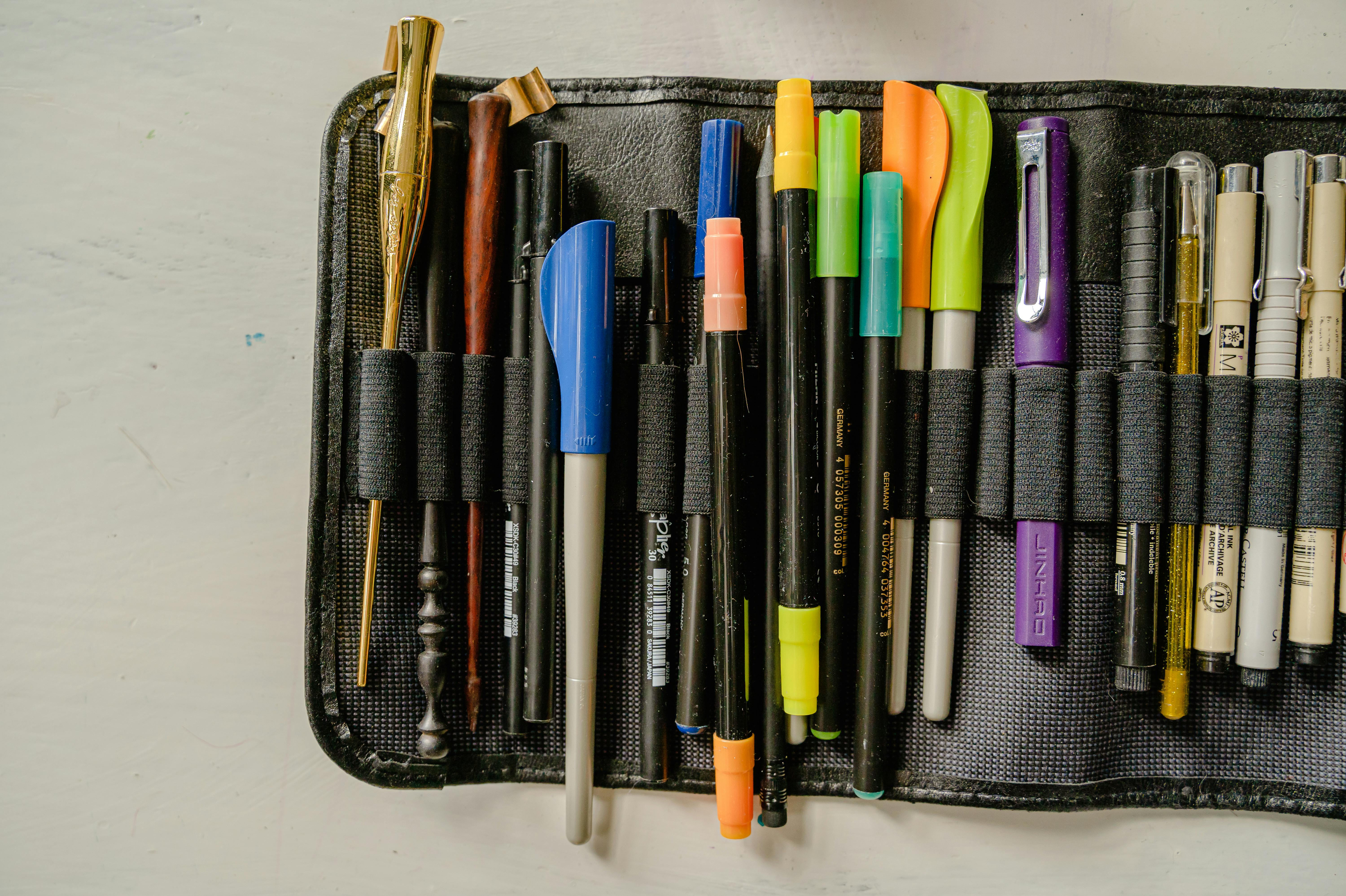Are you an advanced podcaster, looking to elevate your audio game? The age-old debate of XLR vs. USB has left many podcasters scratching their heads, unsure of which option will truly deliver the best sound quality. Fear not, as we break down the pros and cons of both XLR and USB connections, allowing you to make an informed decision that will take your podcasting to the next level. From recommended microphone brands like Shure and Audio-Technica to recording software options such as Adobe Audition and Pro Tools, we’ve got you covered on all aspects of podcast equipment. Get ready to step up your podcasting game and optimize your sound quality with the right connection for you.

Microphone Options
When it comes to choosing the right microphone for your podcast, you have two main options to consider: XLR microphones and USB microphones. Each type has its own advantages and disadvantages, so it’s important to understand the differences between them before making your decision.
XLR Microphones
XLR microphones are the industry standard for professional audio recording. They use an XLR connection, which is a three-pin connector that provides a balanced signal. This type of microphone offers several advantages for advanced podcasters.
Better sound quality
One of the main advantages of XLR microphones is their superior sound quality. XLR connections are known for their ability to transmit audio signals without interference or loss of quality, resulting in clear and professional-sounding recordings. If you prioritize the highest audio fidelity possible, an XLR microphone is the way to go.
More versatility
XLR microphones offer more versatility than their USB counterparts. They can be used with a wide range of equipment, including audio interfaces, mixers, and studio monitors. This flexibility allows you to create a customized setup that meets your specific needs and preferences.
Ability to connect to audio interfaces
Another advantage of XLR microphones is their ability to connect to audio interfaces. An audio interface acts as a bridge between your microphone and your computer, enabling you to control the sound input and output. This connection provides advanced features like gain control, phantom power, and the ability to record multiple microphones simultaneously.
Disadvantages of XLR Microphones
While XLR microphones offer many benefits, there are also a couple of downsides to consider.
Require additional equipment
One disadvantage of XLR microphones is that they require additional equipment to function properly. In addition to the microphone itself, you will also need an audio interface, cables, and possibly other accessories like a shock mount or pop filter. This additional gear can add to the overall cost and complexity of your podcasting setup.
May be more expensive
Compared to USB microphones, XLR microphones are generally more expensive. This is due to their higher quality construction and the additional equipment required. If you have a limited budget, this extra cost may be a limiting factor when choosing a microphone for your podcast.
USB Microphones
USB microphones, on the other hand, offer a simpler and more user-friendly option for podcasters. These microphones connect directly to your computer via USB and are a popular choice among beginners and casual podcasters.
Ease of use
One of the main advantages of USB microphones is their ease of use. With a USB microphone, you can simply plug it into your computer and start recording. There’s no need for additional equipment or complex setup processes. This simplicity makes USB microphones a great choice for those who are new to podcasting or prefer a hassle-free experience.
Portability
USB microphones are also known for their portability. They are typically smaller and lighter than XLR microphones, making them easier to transport and use in different locations. If you frequently record on the go or need a microphone that can be easily packed up and moved, a USB microphone may be the better option for you.
No need for additional equipment
Unlike XLR microphones, USB microphones do not require any additional equipment to function. Once you have the microphone and your computer, you’re ready to start recording. This minimal setup is convenient for those who want to keep their podcasting setup simple and cost-effective.
Disadvantages of USB Microphones
While USB microphones offer convenience and simplicity, they do come with a few drawbacks.
Limited sound quality
USB microphones tend to have lower sound quality compared to XLR microphones. This is because they rely on the internal analog-to-digital converters (ADCs) built into the microphone itself. While the sound quality can still be satisfactory for many applications, it may not meet the higher standards of advanced podcasters who prioritize professional-grade audio.
Lack of versatility
USB microphones are designed to be plug-and-play devices, which means they have limited compatibility with other audio equipment. They cannot be easily integrated into complex setups that involve audio interfaces or mixers. If you anticipate the need for more advanced features or configurations in the future, you may want to consider an XLR microphone instead.
Not compatible with audio interfaces
Another limitation of USB microphones is that they cannot be used with audio interfaces. If you want to take advantage of the features and capabilities that audio interfaces provide, such as multiple microphone inputs or hardware processing, you will need to use an XLR microphone.
Audio Interface Considerations
When using XLR microphones, one important consideration is the role of audio interfaces. An audio interface is a device that connects your XLR microphone to your computer, acting as an intermediary for audio signals. It provides functions like gain control, phantom power, and analog-to-digital conversion.
Understanding the role of audio interfaces
An audio interface serves as the bridge between your microphone and your computer. It takes the analog signal from your microphone, amplifies it, converts it to a digital signal, and sends it to your computer. This allows you to adjust the microphone’s volume, apply effects, and monitor your recordings in real-time.
Compatible with XLR microphones
Audio interfaces are specifically designed to work with XLR microphones. They provide the necessary power (known as phantom power) to operate condenser microphones, which are commonly used by podcasters. If you choose to go with an XLR microphone, it’s important to select an audio interface that is compatible with your specific microphone and offers the features you need.

Choosing the Right Microphone for Your Podcast
Picking the right microphone for your podcast involves evaluating your needs, priorities, and budget constraints. Here are some factors to consider when making your decision.
Evaluating your needs and priorities
First and foremost, you need to identify your specific needs and priorities when it comes to podcasting. Consider the type of content you’ll be producing, your recording environment, and the level of sound quality you’re aiming for. If you’re focused on creating professional-grade audio and have the budget for it, an XLR microphone would be the ideal choice. On the other hand, if you’re just starting out or value simplicity and portability, a USB microphone may be more suitable.
Considering budget constraints
Budget is another crucial factor to consider. XLR microphones tend to be more expensive due to their higher quality construction and the additional equipment they require. USB microphones, on the other hand, are typically more affordable, making them a popular choice for those on a tight budget. Determine how much you’re willing to invest in your podcasting setup and find a microphone that fits within your budget.
Exploring microphone options
Once you have a clear understanding of your needs and budget, it’s time to explore different microphone options. There are several reputable brands known for producing high-quality microphones, including Shure, Rode, and Audio-Technica. Take some time to research and read reviews to find the microphone that best suits your requirements.
Recommended XLR Microphones for Advanced Podcasters
If you’re an advanced podcaster looking for the best XLR microphone, here are three highly recommended options:
Shure SM7B
The Shure SM7B is a legendary microphone known for its exceptional sound quality and versatility. It provides a warm and natural tone, making it a popular choice among professional podcasters and broadcasters. With its built-in pop filter and adjustable frequency response, the SM7B offers unmatched performance for vocal recordings.
Rode NT1
The Rode NT1 is another excellent choice for advanced podcasters. It features a low self-noise design, ensuring crystal-clear recordings with minimal background noise. The NT1 also comes with a shock mount and a pop filter, further enhancing the audio quality. Additionally, Rode offers a 10-year warranty on the NT1, providing peace of mind and assuring its durability.
Audio-Technica AT2020
The Audio-Technica AT2020 is a budget-friendly option that doesn’t compromise on quality. It delivers a clean and detailed sound, making it suitable for various podcasting applications. The AT2020 is well-regarded for its versatility and durability, making it an excellent choice for podcasters who value reliability without breaking the bank.

Recommended USB Microphones for Advanced Podcasters
If you prefer the convenience and simplicity of a USB microphone, here are three recommended options for advanced podcasters:
Blue Yeti
The Blue Yeti is a popular choice among podcasters due to its outstanding sound quality and versatility. It offers multiple pickup patterns, allowing you to adjust the microphone’s sensitivity according to your recording environment. The Blue Yeti also features built-in gain control and headphone monitoring, making it a reliable and user-friendly option.
Audio-Technica ATR2100x
The Audio-Technica ATR2100x is a versatile USB microphone that offers both USB and XLR connectivity. This means that you can start with USB and later transition to XLR if your podcasting setup evolves. The ATR2100x delivers excellent sound quality and is well-suited for both studio and on-the-go recordings.
Rode NT-USB
The Rode NT-USB is a high-quality USB microphone that provides clear and professional-sounding audio. It features studio-grade headphone monitoring, ensuring accurate and real-time monitoring of your recordings. The NT-USB also comes with a pop shield, tripod stand, and storage pouch, adding to its convenience and value.
Factors to Consider When Choosing Between XLR and USB
When deciding between XLR and USB microphones, there are several key factors to consider:
Sound quality requirements
If achieving the highest sound quality possible is your main priority, an XLR microphone is the better choice. XLR connections offer superior audio fidelity and allow for more control over the recording process. USB microphones, while still capable of producing satisfactory sound, may not meet the standards of advanced podcasters who require professional-grade audio.
Budget and cost considerations
Budget is another important consideration when choosing a microphone. XLR microphones tend to be more expensive due to the additional equipment required. USB microphones, on the other hand, are generally more affordable and offer a cost-effective solution for beginner and casual podcasters.
Flexibility and future-proofing
Consider how flexible you want your podcasting setup to be. XLR microphones offer more versatility and can be easily integrated into complex setups involving audio interfaces and other professional equipment. USB microphones, while simpler to use, have limited compatibility and cannot be easily expanded or upgraded in the future.
Compatibility with existing equipment
If you already have other audio equipment or plan to invest in additional gear, consider the compatibility of your microphone choice. XLR microphones are designed to work with audio interfaces, mixers, and other professional equipment. USB microphones, on the other hand, are standalone devices that do not require additional equipment. Choose the microphone that fits seamlessly into your existing or planned setup.
In conclusion, choosing the right microphone for your podcast is a crucial decision that can greatly impact the quality of your recordings. XLR microphones offer superior sound quality and versatility, making them the preferred choice for advanced podcasters. However, USB microphones provide simplicity and portability, making them a popular option for those starting out or prioritizing convenience. Consider your specific needs, budget, and long-term goals before making your decision, and explore the recommended microphone options to find the perfect fit for your podcasting journey.
